16 Different Types of Evergreen Trees (With Pictures)
-
Ed Malaker
- Last updated:
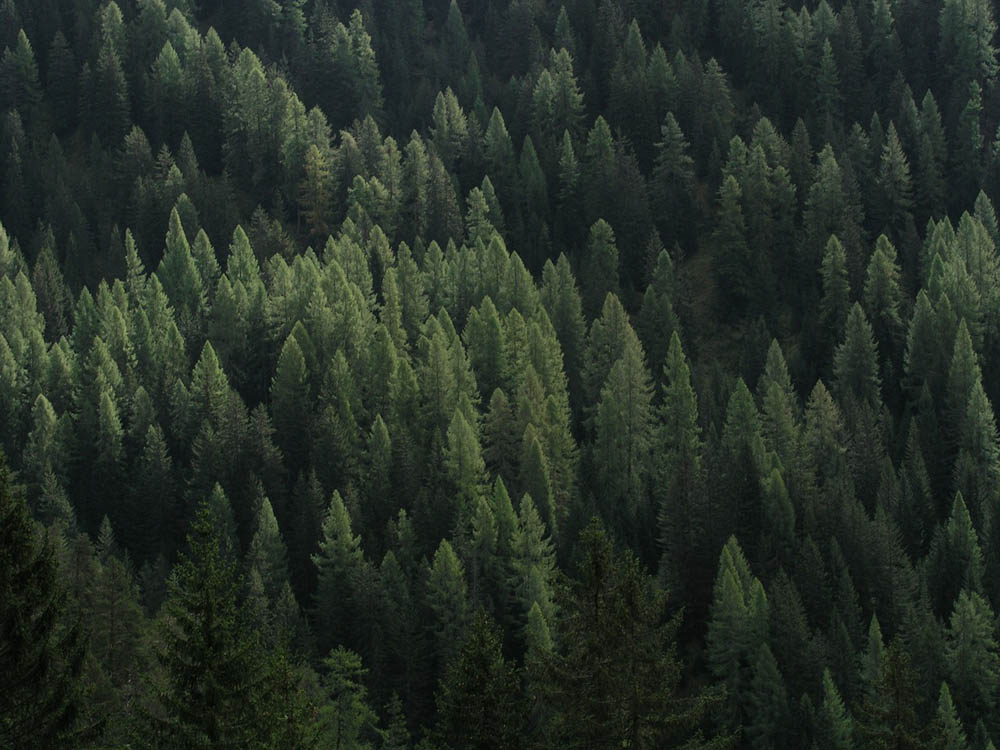
Evergreen trees stay green all year long, and they continue to provide shade, shelter, and other benefits to you and the local wildlife in your area. These low-maintenance species provide windbreaks and improve water and air quality. If you want an evergreen train tree for your property but want to learn more about the different varieties first, you have come to the right place. We will look at several types of evergreens that will make great additions to any landscape. Let’s dig in!
The 16 Different Types of Evergreen Trees
1. Cedar Trees
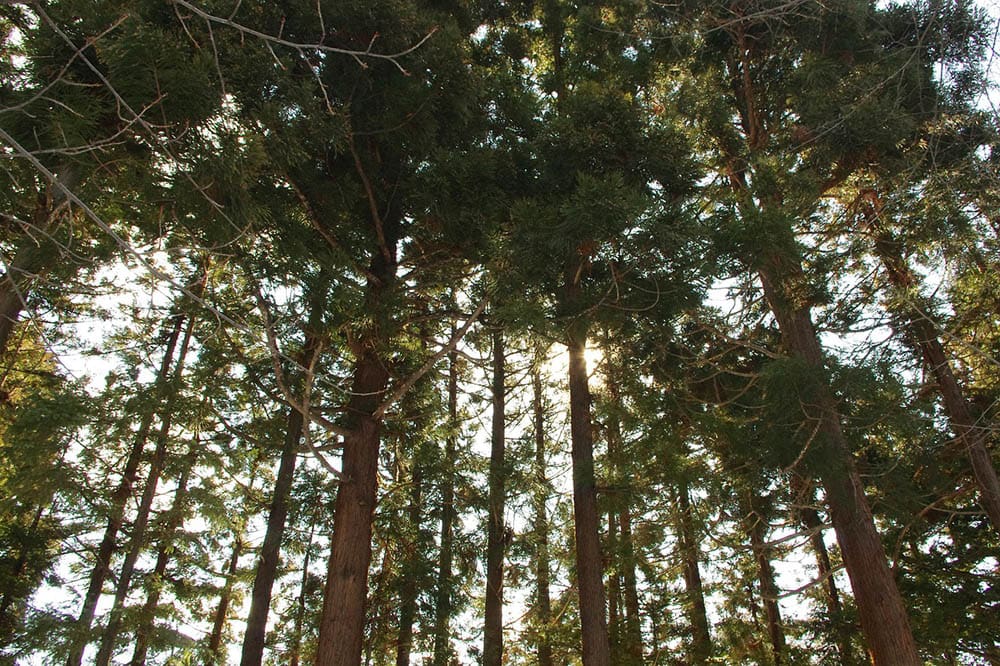
Cedar trees are larger evergreen trees that usually grow to about 140 feet tall. They have spicy-scented wood with thick branches, and you can find them in many colors, from light to dark green and even pale blue.
They are a popular ornamental tree in areas where temperatures don’t fall below zero degrees Fahrenheit too frequently. They are native to the Himalayan mountains and Mediterranean region. The wood is a natural bug repellent, so you often see it in mulches.
2. Fir Trees

Fir trees are prevalent in the United States and the rest of the world because they make great Christmas trees. Their name references their ability to grow tall, and they often reach more than 200 feet when fully grown.
You can find these trees all through North and Central America, Europe, Asia, and northern Africa. Fir trees have cones that stand upright, and their needles look like they’re attached to the branch by suction cups.
3. Pine Trees
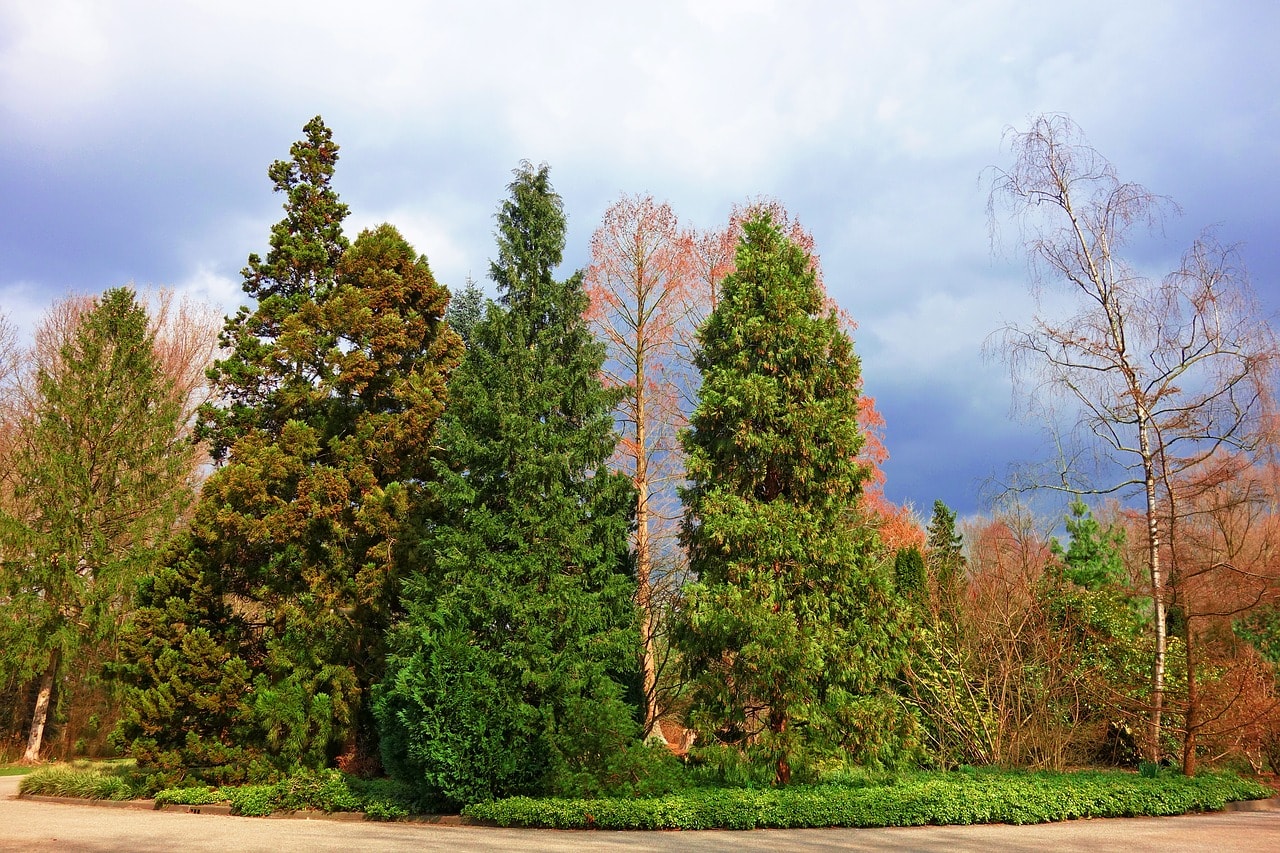
Pine trees look very similar to firs, and people have often called them furs throughout history. Like the fir tree, the Pine tree grows very tall and can often exceed 250 feet when fully grown. The trees that have lived for several hundred years almost have a thick, scaly bark. The pine tree needles are clustered into groups of up to seven and can stay on the tree for 40 years.
Related Read: 19 Different Types of Pine Trees
4. Juniper Trees
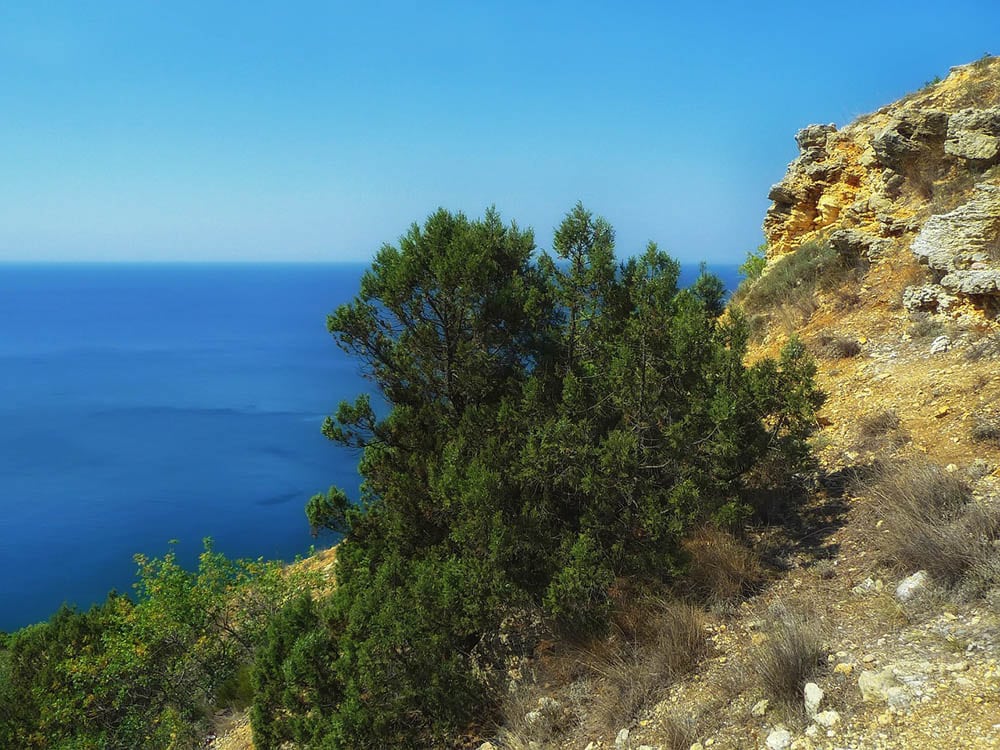
Juniper trees are a diverse species that can exist as a bush or as a tree. The female juniper has fruit-like seeds that almost resemble blueberries, and many varieties have two kinds of leaves that change as the plant ages. You can find juniper trees in various environments, including rocky gravel and planted soil.
5. Holly Trees
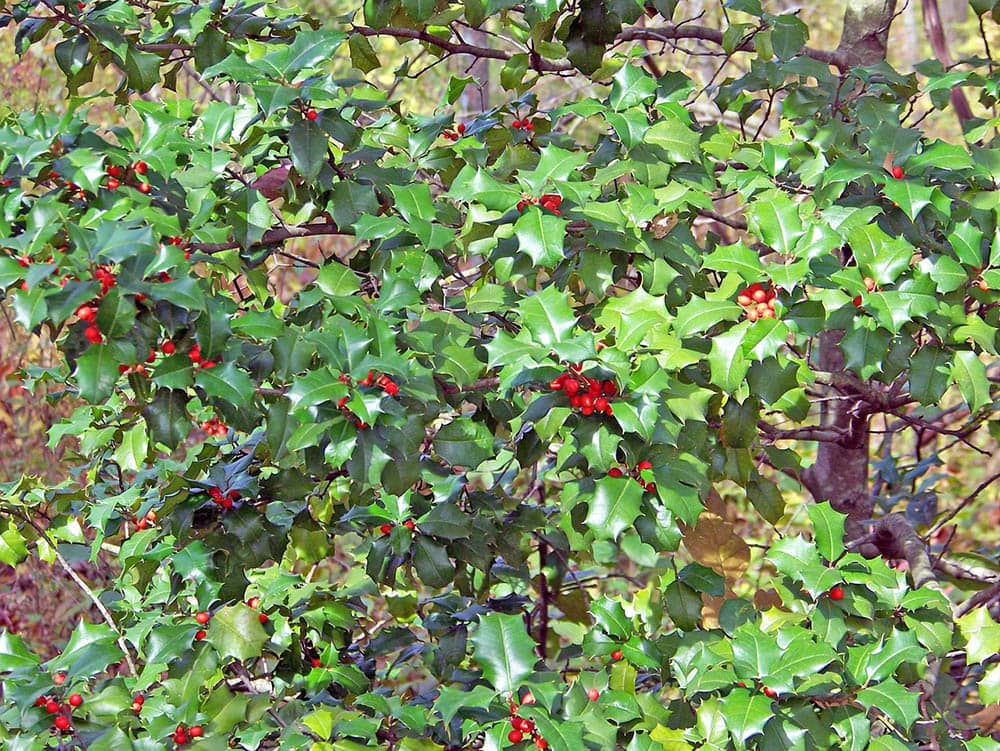
People usually think of holly trees around the Christmas holiday due to their attractive appearance that fits in with the season. However, the trees are widespread throughout many temperate and subtropical regions worldwide. The trees are small and slow-growing, usually reaching no more than 80 feet tall.
6. Thuja Trees
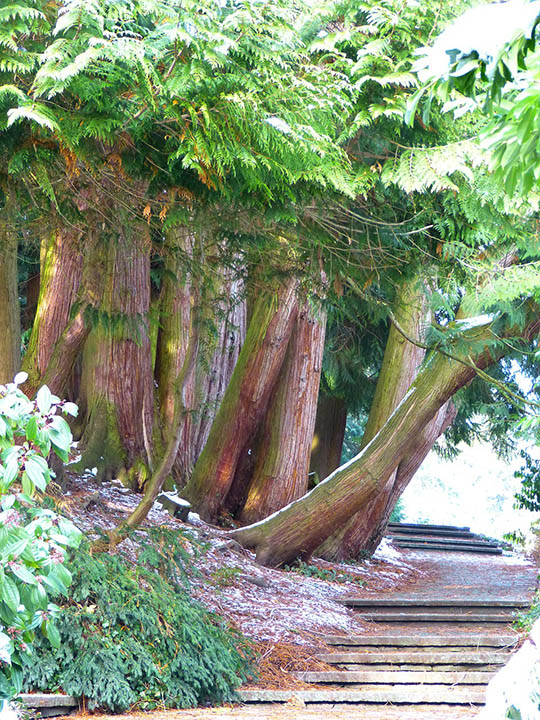
Thuja trees are small, thin trees that typically grow between 10 and 200 feet tall. The thuja is a popular tree for property division, and it’s also ornamental. Two species are native to the United States, and you can find them as far north as Alaska. They have a reddish-brown bark and a lightweight wood that’s easy to split yet resists decay.
7. Cryptomeria Trees
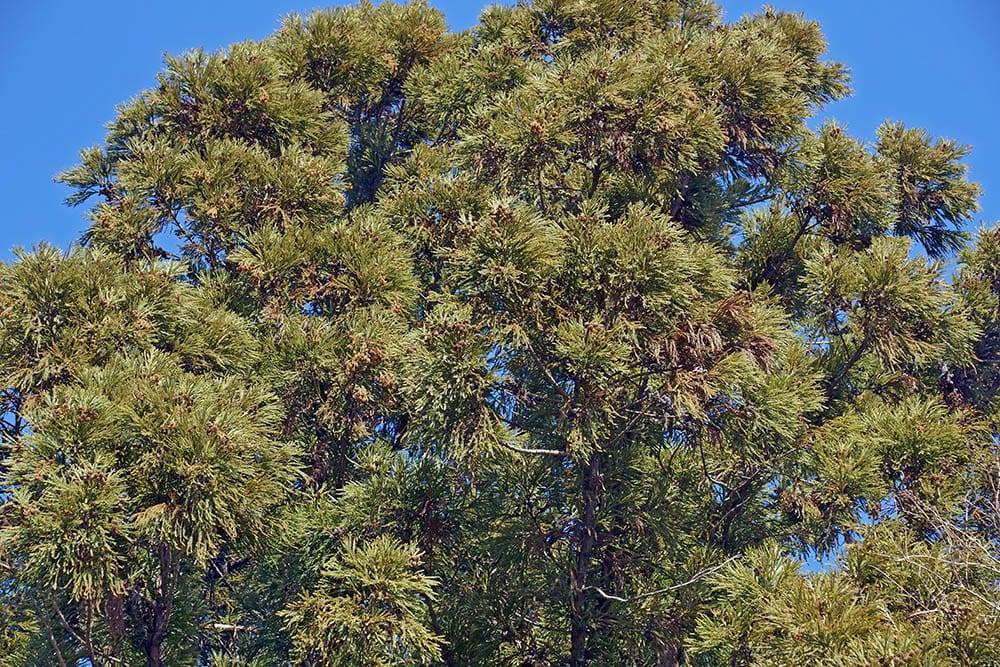
You can call a cryptomeria tree a Japanese cedar or Japanese redwood if you have difficulty with the official name. They can grow to 230 feet tall and have a bark that peels away from the tree in long vertical strips, giving them their distinctive appearance. China claims to have trees of this species more than 1,000 years old.
8. Olive Trees
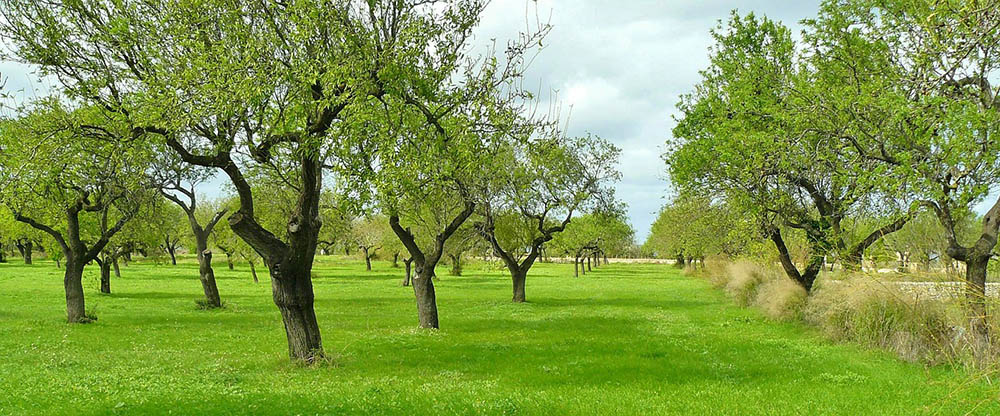
Olive trees are an essential cash crop for many countries, especially Italy, Australia, and New Zealand. They grow to almost 50 feet tall with silvery green leaves in a gnarled, twisted trunk. Olive trees produce small white flowers before the fruit develops. Fossil evidence proves that they grew for millions of years, and humans might have eaten them 6,000 years ago.
9. Hemlock Trees
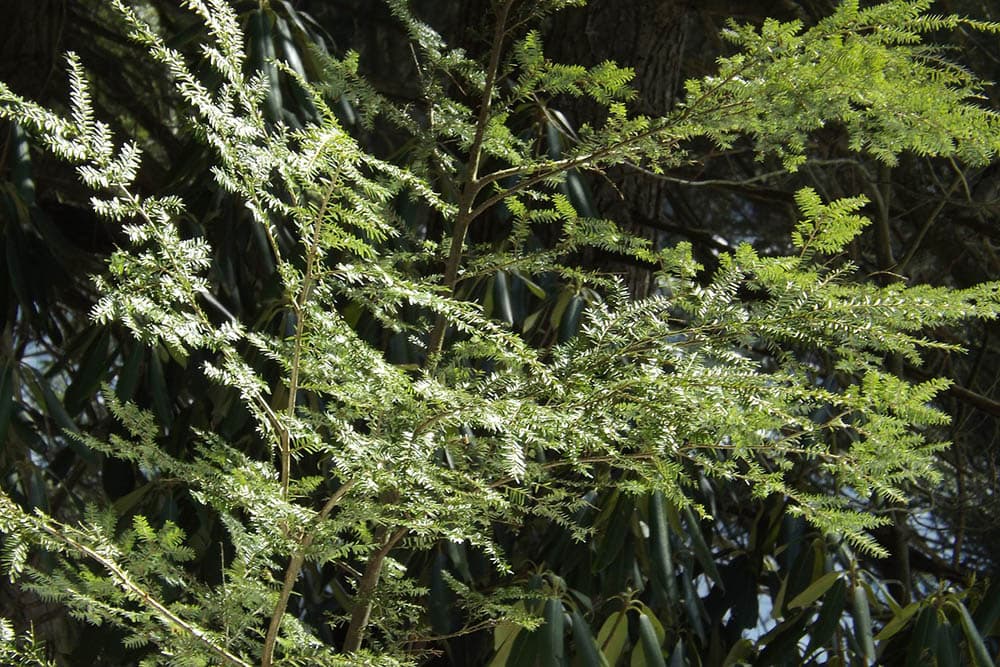
Hemlock trees are native to the northeastern United States and typically grow over 100 feet tall. They have a very long lifespan; one Pennsylvania tree is estimated to be more than 500 years old. Hemlock is used for railroad ties because it holds the spikes tight. The trees prefer higher altitudes with plenty of rain.
Related Read: 12 Types of Trees in Pennsylvania (With Pictures)
10. Spruce Trees
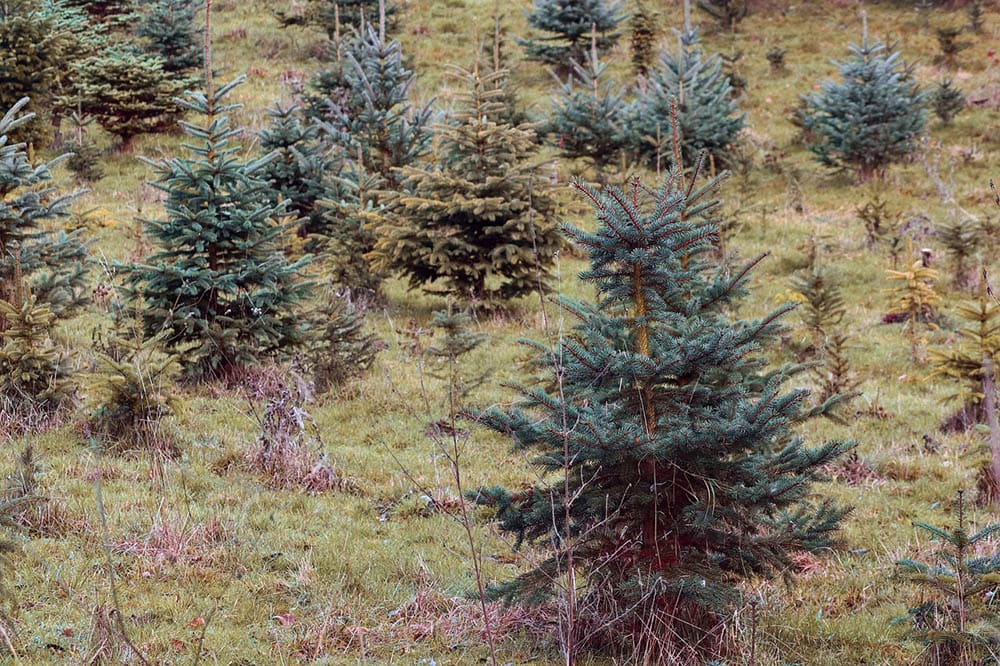
The spruce tree is a large family of trees in temperate zones north of the equator. It’s another evergreen with a long lifespan, and one tree in Norway is estimated to be more than 9,500 years old, claiming the title of the world’s oldest tree. The trees are incredibly versatile and used for tonewood and musical instruments. They’re also an important ingredient in paper, timber, and medicine.
11. Cypress Trees

Cypress is a large group of trees and shrubs that you can find worldwide in the temperate zone. The trees can grow more than 200 feet tall, and you will often see them decorating a park or church due to their ornamental appearance. The timber is valuable but not as popular as other species like oak or pine.
Related Read: 12 Types of Trees in Connecticut (With Pictures)
12. Arborvitae Trees
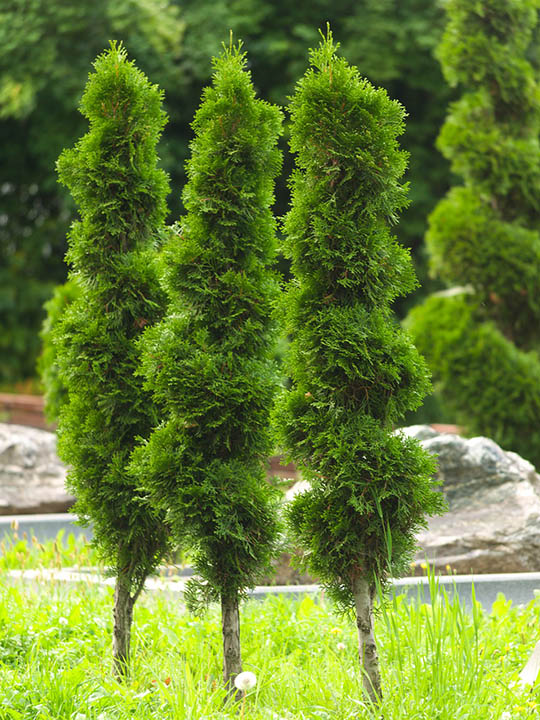
The arborvitae tree is an excellent property-dividing variety due to its tall, thin growing style. A fully grown tree can often reach 75 feet tall, and they usually grow at a rate of 3 to 4 feet per year. They are attractive and don’t require much care, and you only need to provide them with about an inch of water per week to keep the tree healthy.
- Related Read: Is My Arborvitae Dying (10 Signs to Look For)
13. Yew Trees
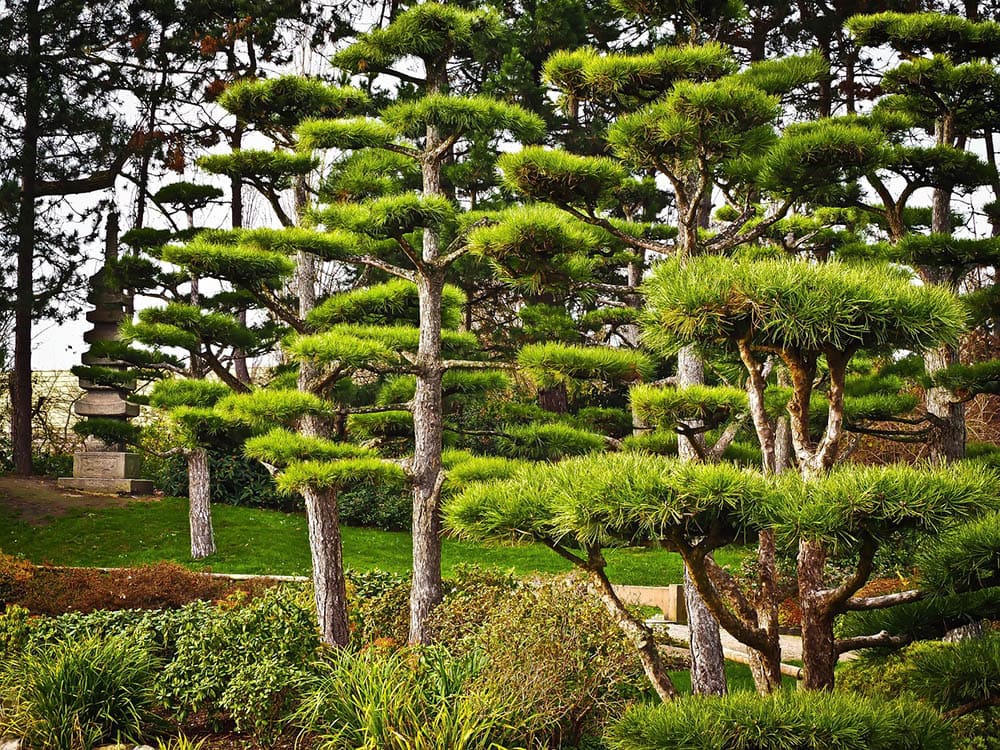
Yew trees are slow-growing and long-lived tree that usually reaches about 65 feet tall. All plant parts are toxic to humans, so it’s not a great choice if you have small children who like to play near the trees. You will see these trees frequently in church graveyards; many consider them a sign of sadness. The wood has a yellowish-brown color, and woodworkers use it to make longbows due to the springy nature of the wood.
14. Eucalyptus Trees
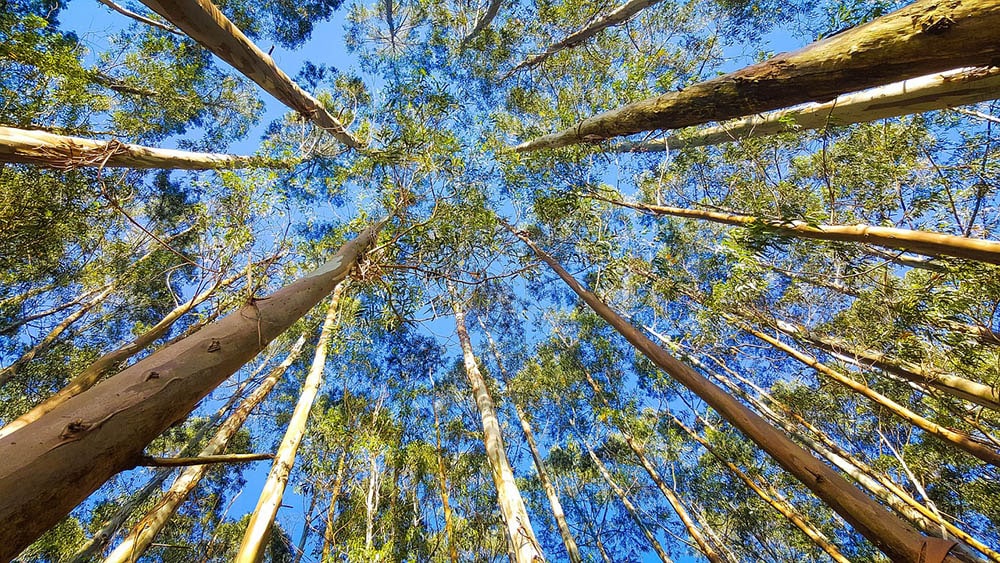
The eucalyptus tree is a large family of plants native to Australia, and you can find them in all parts of the continent. It’s a fast-growing wood that you can use for paper, honey, timber, and essential oils. Many woodworkers also use it for timber, but it’s highly flammable, so you can’t use it for housing. Some varieties can grow to 200 feet or more, while others grow closer to the ground.
15. Bamboo
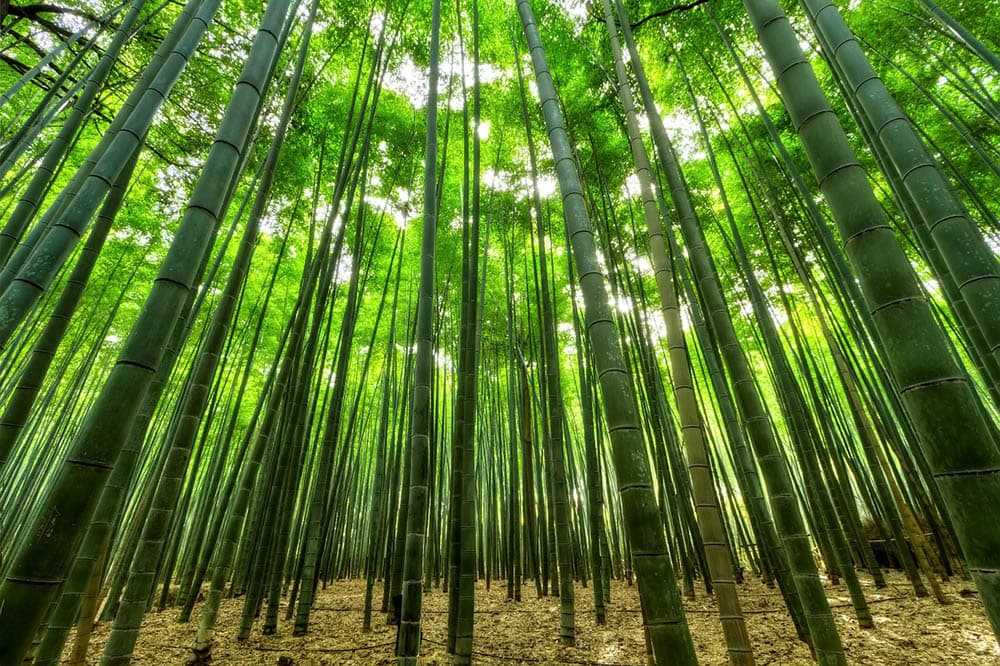
Bamboo trees are native to Asia, but they are a popular garden ornament and privacy barrier in the United States. Bamboo grows extremely quickly, and some species can grow more than an inch an hour on average. Bamboo is a popular food source and building material in many parts of the world, and it thrives in warm areas with moist soil.
16. Redwood Trees

Redwood trees are among the tallest trees and have an extremely long lifespan that can last thousands of years. Since they are so large, redwood trees are popular for lumber, making them a target for logging throughout history. Many enjoy a protected status, but the numbers continue to fall.
Related Reads:
- 10 Different Types of Deciduous Trees (With Pictures)
- How To Landscape Around a Tree with Exposed Roots in 5 Simple Steps
Conclusion
As you can see, several varieties of evergreen trees can be used for ornamental reasons or as a solution to a problem like a lack of privacy or too much wind creating snowdrifts on your property. Pine and fir trees are easy to find and grow almost everywhere in the United States, and they make an excellent choice for a beginner or someone who wants to create a barrier between properties or break wind.
Cedar is also a great choice because it repels insects, including fleas and ticks. If your need for an evergreen tree is strictly decorative, hopefully, the images above give you what you need to select your favorite.
Featured Image Credit: Pixabay
Contents
